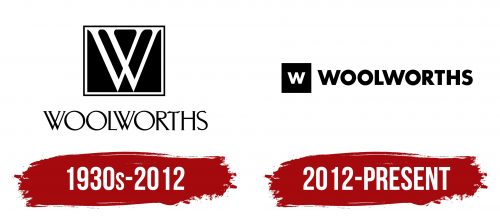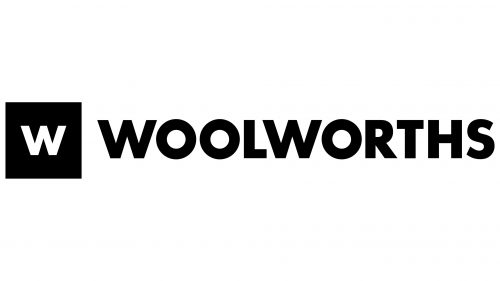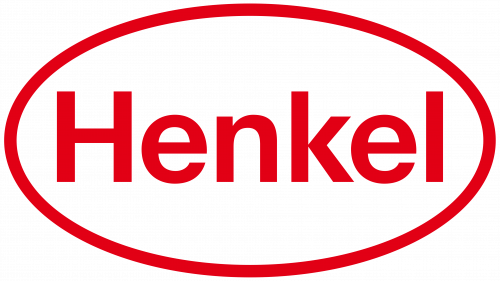The Woolworths logo balances simplicity and stability. It reflects the retail chain’s confidence in its future and its products. The emblem exudes reliability, proven by the brand’s continuous development and new store opening.
Woolworths: Brand overview
The first Woolworths store in South Africa opened in 1931 when Max Sonnenberg and his son Samuel moved to Cape Town. Though it was unrelated to American Woolworths stores, their idea influenced the design of the Plein Street store.
The Sonnenbergs customized the fixed-price shop model to bring high-quality products at reasonable rates to the South African market. Because of its extensive inventory and competitive pricing, its initial store gained popularity among the locals.
Throughout the 1930s, Woolworths expanded despite the Great Depression. The business launched new locations in Johannesburg and Durban, among other South African towns. The network’s future national prominence is based on the foundation created during this period of expansion.
World War II presented many hurdles in the 1940s, but the company could adjust to the changing environment and maintain its market position by offering food products and necessities.
The company started aggressively growing its product line in the 1950s. By adding apparel and home textile departments to its stores, the corporation greatly enhanced the brand’s customer appeal.
The firm experienced substantial expansion during the 1960s. Opening many new outlets expanded its market share in smaller towns and bolstered its position in big cities throughout South Africa.
The company started creating its range of culinary items in the 1970s. This campaign helped the enterprise stand out from rivals and was an important milestone in the brand’s evolution.
The business embarked on its global expansion strategy in the 1980s. The company established shops outside South Africa, mostly in the continent’s surrounding nations.
Following the end of apartheid in the 1990s, the business encountered fresh opportunities and problems. The firm modified its approach to the shifting socioeconomic landscape to attract more clients.
The 2000s were a time of innovation and modernity for the company. The business made large investments in modernizing its retail spaces and raising the standard of customer care. Online retail was also actively developing during this time.
The 2007 acquisition of the Australian apparel and accessory company Country Road Group was an important step in growing the brand’s global reach.
The company saw continued expansion and business diversification throughout the 2010s. The enterprise grew its footprint in Africa and other continents while creating innovative store designs, such as compact convenience stores.
2014 saw the firm make a significant acquisition when it bought the chain of upscale Australian department stores David Jones. This transaction improved the company’s standing in the Australian market considerably.
The company kept up its foreign expansion plan in 2015. The business successfully paid 2.1 billion Australian dollars to acquire Australian retailer David Jones.
The business introduced a brand-new sustainability program in 2016. To lessen its influence on the environment and enhance the social aspects of its operations, the company launched the “Good Business Journey” program. As part of this initiative, the firm started aggressively integrating eco-friendly technologies in its retail locations and distribution hubs.
In 2017, the business concentrated on growing its web presence. The enterprise made large investments to upgrade its online storefront, increase its selection of products, and upgrade its delivery infrastructure. These efforts reinforced the company’s position in digital retail, and online sales increased significantly.
In 2018, the firm witnessed advancements in the food industry. In response to increased consumer demand for healthier food, the company launched a new line of organic and healthy products under its brand.
The enterprise opened new stores in several African nations in 2019 as part of its ongoing effort to increase its footprint there. To improve the shopping experience, the company also invested in updating its current locations by introducing fresh technology.
In 2020, the firm made a major push toward digital technologies. The business released a new mobile app that combined loyalty programs, internet shopping, and customer-specific recommendations.
As part of its ongoing sustainability strategy, the company said in 2021 that it would attain carbon neutrality by 2040. The business started investing significantly in eco-friendly technology and renewable energy sources.
In 2022, the firm concentrated on creating its apparel and home textile brands. The brand unveiled several new collections created in association with renowned designers.
The business launched a new integrated e-commerce platform in 2023, bringing all of its brands in Australia and South Africa together as part of an advanced digital transformation strategy. Thanks to this technology, customers could purchase from a single interface across all group stores, greatly enhancing user experience and increasing online sales volumes.
The company extended its “Good Business Journey” environmental initiative in 2023. By 2025, an ambitious proposal called for packaging to be entirely recyclable, reused, or biodegradable.
In 2024, the firm made notable progress in the “healthy eating” sector. Under the “Woolworths Wellness” brand, the corporation unveiled a new product line that included vegan, gluten-free, and organic options.
That same year, the business started experimenting with the “stores of the future” idea in a few South African and Australian locations. Modern technology was installed in these establishments, including interactive fitting room mirrors, robotic inventory management systems, and contactless payment methods.
Meaning and History
What is Woolworths?
It is a leading retailer known for a wide range of products, including clothing, cosmetics, homewares, and groceries. The company emphasizes quality, sustainability, and ethical sourcing. It is famous for its premium food products, which include fresh produce, ready-to-eat meals, and gourmet items. The brand offers stylish and durable clothing as well as a variety of home and beauty products. The South African company is committed to sustainable development by supporting local communities through various initiatives.
1930s – 2012
Woolworths’s visual identity is not distinguished by vibrant colors or variety, but this does not mean the chain it represents is unprofitable. No, it has long expanded beyond South Africa, where its first stores opened, and now delights customers worldwide. Their attention is drawn to the practicality of the emblem and products on the shelves, as the visual identity reflects a serious approach to business.
This logo has two basic elements: a personal graphic symbol and an inscription. The first represents the second. How? Very simply, the design conveys the short name of the brand, as indicated in the text. They form a unified whole because several aspects connect them:
- Name;
- Color;
- Font;
The capital “W,” which appears in the retail chain’s name, became the basis for the symbol. The main element of the inscription is the full form of the name. This highlights the company’s practicality, as this label makes it easy to mark price tags. This is the first shared factor.
The second distinguishing feature of the logo is monochrome. Both the symbol and the inscription are in black and white. The contrast makes all the elements stand out clearly, whether on signs or electronic device displays.
The third unifying aspect is related to the font. The graphic symbol uses the first letter of the word “Woolworths,” placed below. A double structure, sharp ends, thin strokes, and serifs characterize it. The same glyph appears in the text.
The fourth common feature is the unified style. The letters everywhere appear elegant, emphasizing the retail stores’ practicality, simplicity, and stability. The alternation of narrow and wide strokes adds variety, giving the emblem expression and compensating for the lack of color.
The font is uppercase, serifed, and very elegant. Several letters stand out: the “R” with a gracefully extended leg, the “W” with intersecting elements, the “T” with an exquisitely curved top, and the “O” in the shape of a ring. The upper symbol resembles a square with a mysterious black background, with a white glyph, similar to two inverted triangles, visible. Together, they support a creative atmosphere and create a unique image of the retail chain.
2012 – today
This Woolworths logo is incredibly businesslike. It features a geometric style and monolithic letters that form a solid horizontal inscription. The brand’s symbol comes first—a black square without a frame, with a white glyph in the center. The sharp, strict edges reflect the company’s high expectations for its employees to adhere to all prescribed standards.
The straight angles and lines of the geometric figure also indicate impeccable customer service, comfortable shopping conditions, a businesslike atmosphere, and discipline. The emblem’s minimalism emphasizes this, with nothing extra—just the unique symbol and the name. This approach perfectly conveys the simplicity and ease of shopping, attracting more customers.
The capital letter “W” is in the middle of the square, equally distant from all four sides. It is also simple, made up of smooth strokes of equal thickness. Despite the monochrome design, the clear symbol is visible from afar. It’s bold and straight and perfectly matches the style of the nearby inscription.
On the other hand, the text is written in black glyphs on a white background. Here, the contrast is also effective: it highlights the retail chain’s name, clearly visible on the sign from any distance. The squat letters give a sense of reliability, steadiness, and stability. The classic sans-serif font suggests ease of use in the stores and Woolworths’ openness to customers.







